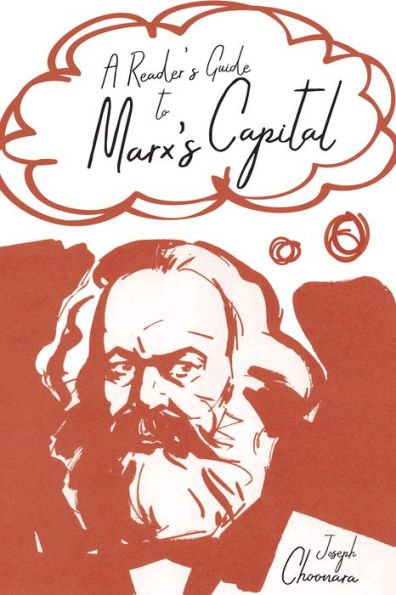

Hardcover
-
PICK UP IN STORECheck Availability at Nearby Stores
Available within 2 business hours
Related collections and offers
Overview
Joseph Choonara teaches international political economy at King’s College London. He is the author of Unravelling Capitalism, a columnist for Socialist Review, and an editorial board member of International Socialism.

Product Details
| ISBN-13: | 9781608467419 |
|---|---|
| Publisher: | Haymarket Books |
| Publication date: | 07/30/2019 |
| Pages: | 200 |
| Product dimensions: | 5.50(w) x 8.50(h) x (d) |
About the Author
Table of Contents
Preface 9
A note for reading groups 11
Introduction 13
The production of Capital 15
Marx's method 17
1 The commodity 21
1 The two factors of the commodity 21
2 The dual character of the labour embodied in the commodities 26
3 The value-form or exchange-value 30
a The simple, isolated or accidental form of value 31
b The total or expanded form of value 31
c The general form of value 31
d The money form 32
4 The fetishism of the commodity and the secret thereof 32
2 The process of exchange 42
3 Money, or the circulation of commodities 46
1 The measure of value 47
2 The means of circulation 50
a The metamorphosis of commodities 50
b The circulation of money 53
c Coin. The symbol of value 53
3 Money 54
a Hoarding 54
b Means of payment 55
c World money 56
4 The general formula of capital 57
5 Contradictions in the general formula 61
6 The sale and purchase of labour-power 63
7 The labour process and the valorisation process 67
1 The labour process 68
2 The valorisation process 71
8 Constant capital and variable capital 76
9 The rate of surplus-value 79
10 The working day 82
11 The rate and mass of surplus-value 93
12 The concept of relative surplus-value 96
13 Cooperation 99
14 The division of labour and manufacture 102
1 The dual origin of manufacturing 102
2 The specialised worker and his tools 104
3 The two fundamental forms of manufacture-heterogeneous and organic 104
4 The division of labour in manufacture, and the division of labour in society 106
5 The capitalist character of manufacture 108
15 Machinery and large-scale industry 110
1 The development of machinery 110
2 The value transferred by the machinery to the product 116
3 The most immediate effect of machine production on the worker 116
4 The factory 118
5 The struggle between worker and machine 121
6 The compensation theory, with regard to the workers displaced by machinery 123
7 Repulsion and attraction of workers through the development of machine production. Crises in the cotton industry 124
8 The revolutionary impact of large-scale industry on manufacture, handicrafts and domestic industry 125
9 The health and education clauses of the Factory Acts. The general extension of factory legislation in England 126
10 Large-scale industry and agriculture 128
16 Absolute and relative surplus-value 130
17 Changes of magnitude in the price of labour-power and surplus-value 137
18 Different formulae for the rate of surplus-value 139
19 The transformation of the value (arid respectively the price) of labour-power into wages 140
20 Time-wages 142
21 Piece-wages 144
22 National differences in wages 147
23 Simple reproduction 149
24 The transformation of surplus-value into capital 153
1 Capitalist production on a progressively increasing scale 153
2 The political economists' erroneous conception of reproduction on an increasing scale 154
3 Division of surplus-value into capital and revenue. The abstinence theory 155
4 The circumstances which, independently of the proportional division of surplus-value into capital and revenue, determine the extent of accumulation 156
5 The so-called labour fund 158
25 The general law of capitalist accumulation 159
1 A growing demand for labour-power accompanies accumulation if composition of capital remains the same 159
2 A relative diminution of the variable part of capital occurs in the course of the further progress of accumulation and of the concentration accompanying it 164
3 The progressive production of a relative surplus population or industrial reserve army 165
4 Different forms of existence of the relative surplus population. The general law of capitalist accumulation 168
5 Illustrations of the general law of capitalist accumulation 170
26 The secret of primitive accumulation 172
27 The expropriation of the agricultural population from the land 176
28 Bloody legislation against the expropriated since the end of the 15th century. The forcing down of wages fay Act of Parliament 179
29 The genesis of the capitalist farmer 183
30 Impact of the agricultural revolution on industry. The creation of a home market for industrial capital 185
31 The genesis of the industrial capitalist 186
32 The historical tendency of capitalist accumulation 188
33 The modern theory of colonisation 190
Conclusion 192
Index 196
